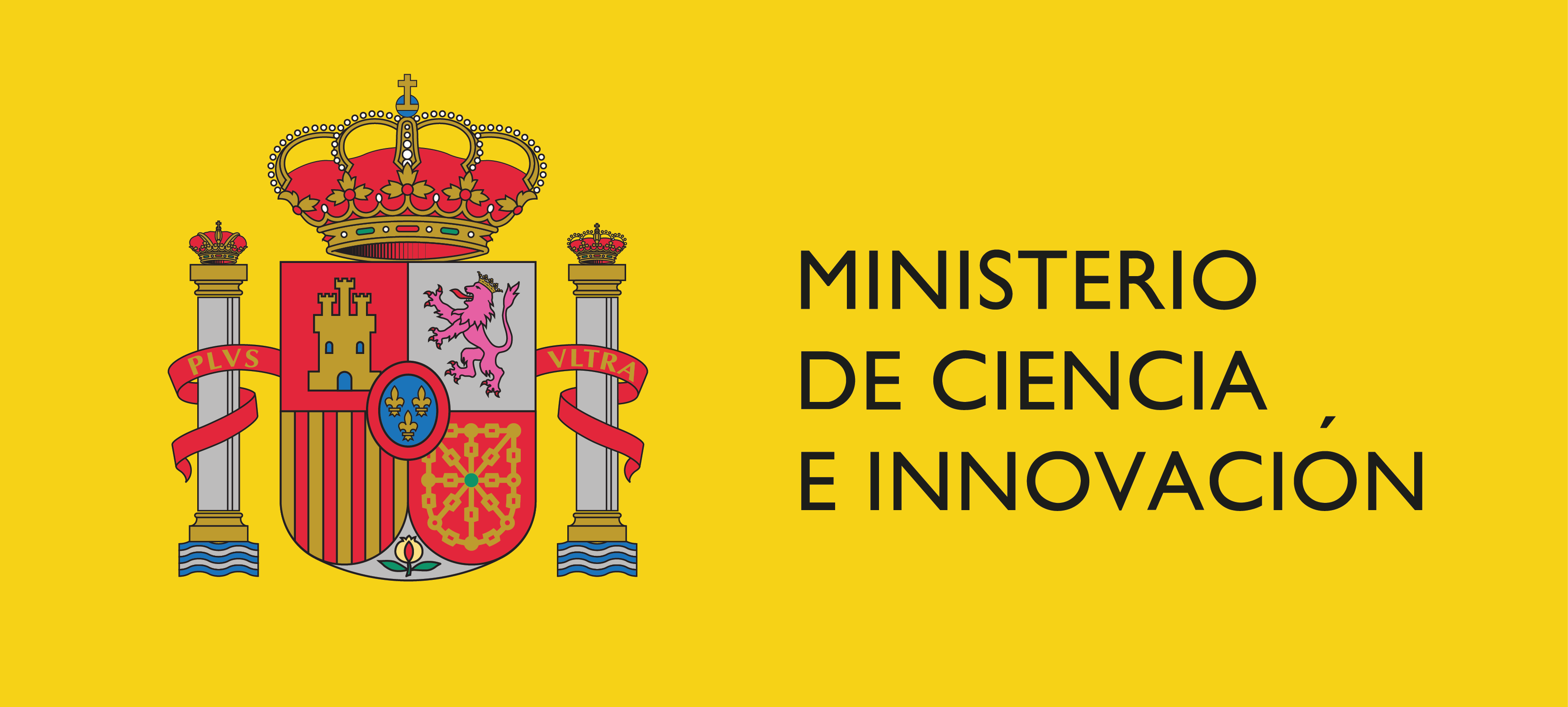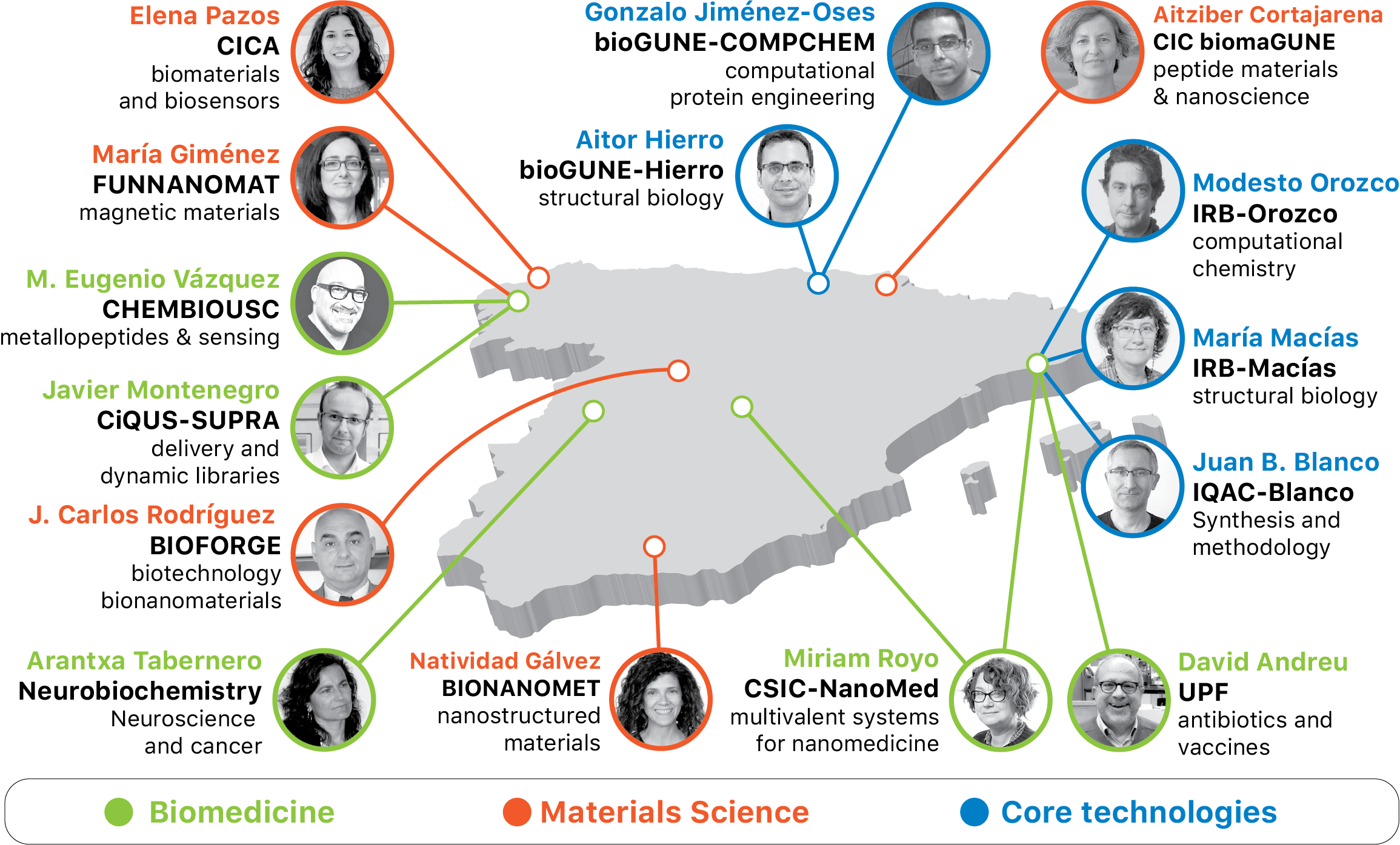About

BIONAPEP is the Peptides in Biomedicine and Nanoscience Network, established as a "Red de Investigación" of the Spanish AEI and coordinated by Dr. M. Eugenio Vázquez.
Peptides are privileged chemical entities with innumerable applications in biomedical sciences. Peptides—and proteins—have found a broad use in biological research, and they are progressively being applied with therapeutic purposes. Examples include their use as analogues of native hormones, as simplified models of proteins and signaling biomolecules, as tools for membrane translocation, novel antibacterials, or targeting vectors, to name just a few of their applications. However, the necessity of combining chemistry and molecular biology to introduce modifications in the proteins hampers the widespread use of these systems by biomedical groups, and limits the actual impact of modern engineering methods that allow increased stability, conformational control, and improved delivery of bioactive molecules. Therefore, BIONAPEP aims to fill this gap by applying our interdisciplinary expertise in state-of-the-art peptide engineering and characterization techniques to researchers working in biomedicine and materials science. Conversely, these applied fields will offer stimulating opportunities for the development of new methodologies and target-oriented application of the core know-how to solve cutting-edge technological problems which would be unreachable without that expertise.
Objectives
The objective of the network is to induce collaborations amongst the newtwork partners at the forefront of peptide and protein sciences, to offer new opportunities to solve specific challenges in applied projects and give rise to novel methodologies.
The BIONAPEP network aims to be a catalyst that brings together a variety of groups and creates the appropriate conditions to initiate multidisciplinary research. Since one of the major goals of this network is to seed future collaborative grant applications, it is foreseeable that the successful projects will give rise to stable scientific relationships. Moreover, the exchange of students will likely result in postdoctoral exchanges between the partners, which will extend and reinforce the collaboration between the groups. In order to facilitate the maintenance of such collaborations through time, we will keep the website active.
Some examples of potential uses of cutting-edge methodologies to solve (bio)engineering and medicinal problems are facilitating the use of conformationally-restricted peptides that adopt defined secondary structures to achieve higher binding affinity (α-helix staples and hydrogen bond surrogates, or grafted peptides), designing oligomeric peptides that take advantage of cooperative effects to increase affinity and selectivity, or conjugates for cell internalization and to improve the transport across different body barriers, as blood brain barrier.
We will also explore the introduction of fluorescent labels to specific nanobodies and will develop tools to stabilize specific complexes for structural and biomedical studies (e.g., diagnostic tools for clinicians). Finally, we will also investigate protein dynamics in the presence of specific labels that will allow us to monitor Liquid-Liquid phase transition processes, which affect transcription factors and DNA/RNA binding proteins located at non-membrane compartments in cells.
On the other hand, thanks to their functional and structural versatility, synthetic simplicity, intrinsic biocompatibility and high biodegradability, there has been over the last years a huge progress in the use of polypeptide platforms for the design of new biomaterials with defined structures and properties. Polypeptide-based materials have shown to be useful in many applications, such as protein cages that work as nanoreactors, artificial organelles and delivery vehicles, peptide-based architectures for charge or energy transporting systems, as well as peptide materials for therapy, drug delivery and diagnostics.
Beyond these applications, one of the greatest challenges in the development of new materials is the design of complex and structurally well-defined smart multifunctional materials that replicate the adaptive and dynamic properties of the biomolecular assemblies in living organisms, which will be more approachable through a concerted and multidisciplinary approach involving a number of BIONAPEP’s partners.
Members
BIONAPEP is a highly interdisciplinary network composed by 15 groups with a variety of interests ranging from the development of new methodology for efficient peptide synthesis and bioconjugation, or the theoretical study of molecular recognition processes and protein engineering, to the study of peptide-based materials and bionanoparticles and the determination of protein complexes with and without DNA. The variety of backgrounds and interests is one of the major assets of this network and ensures fruitful interactions between the partners. In addition to its multidisciplinary nature, BIONAPEP brings together groups across all the Spanish geography and combines a number of junior researchers at the initial stages of their scientific careers with larger and well established teams.
Hover your mouse over the team members to see a description
Acknowledgements


